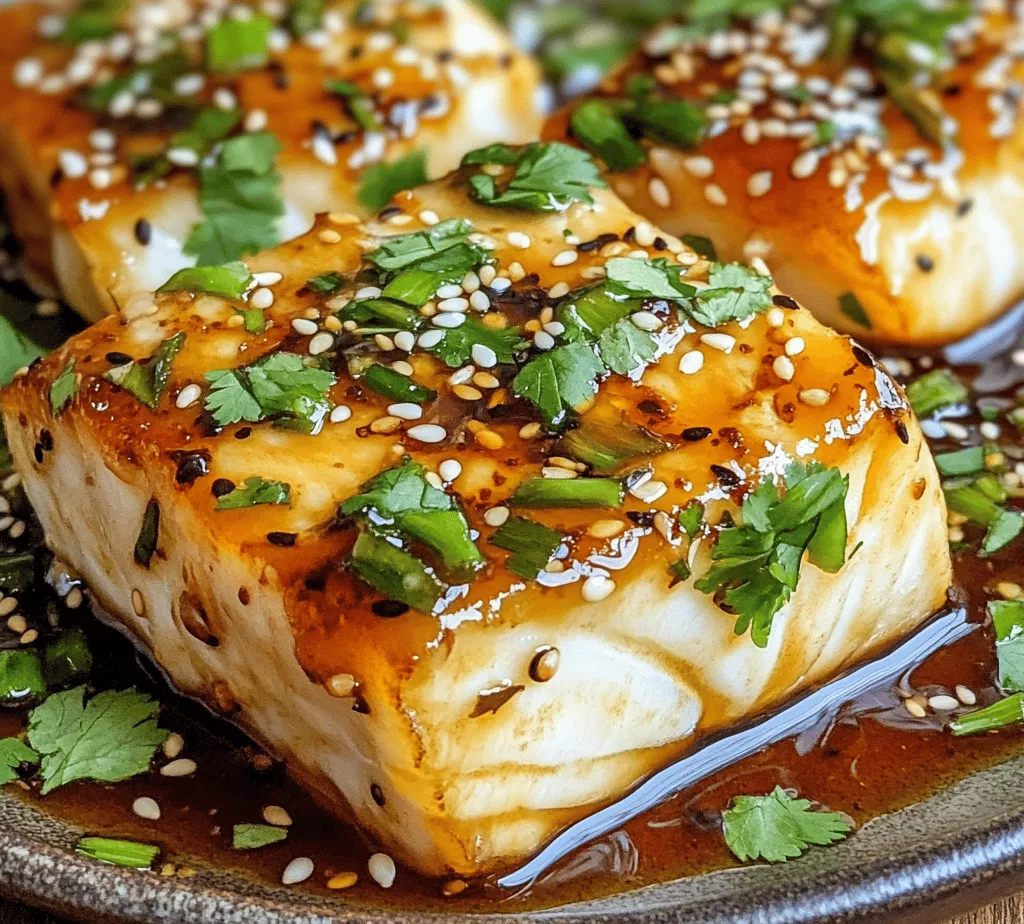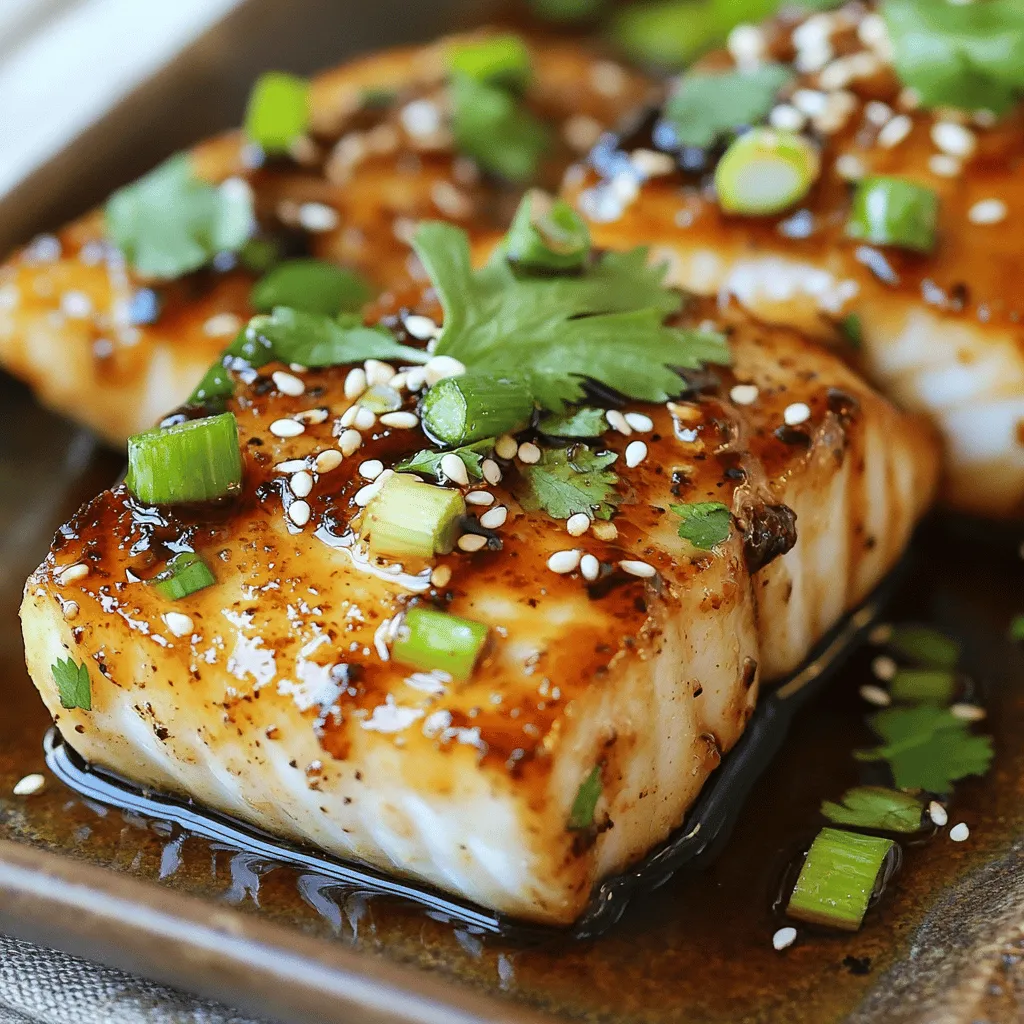Introduction
As more people seek healthier lifestyles, low-carb diets such as the ketogenic (keto) diet have surged in popularity. The keto diet focuses on high-fat and low-carbohydrate meals, which can help promote weight loss and improve overall health. However, eating keto doesn’t mean sacrificing flavor or variety. In fact, incorporating diverse flavors and cuisines into meal planning can make healthy eating enjoyable and sustainable. Asian-inspired dishes, with their rich taste profiles and vibrant ingredients, are perfect for this purpose and offer a delightful culinary experience without the carbs.
One standout choice in the world of seafood is Chilean seabass, a premium fish known for its rich flavor and buttery, flaky texture. This fish not only elevates the dining experience but also aligns perfectly with keto principles. Rich in omega-3 fatty acids and protein, Chilean seabass is an excellent option for those looking to nourish their bodies while adhering to a low-carb lifestyle. The featured recipe, Keto Asian-Inspired Chilean Seabass in Soy Ginger Sauce, encapsulates the essence of Asian cuisine while supporting your keto goals.
This dish is not only health-conscious but also incredibly simple and quick to prepare, making it a perfect option for busy weeknights or special occasions. With a tantalizing blend of soy sauce, fresh ginger, garlic, and a hint of sweetness, this recipe will transport your taste buds to the bustling streets of Asia, all while keeping your carb intake in check. Let’s dive into the ingredients that make this dish shine and learn how to prepare this delightful seafood offering.
Understanding the Ingredients
When crafting this scrumptious Keto Asian-Inspired Chilean Seabass in Soy Ginger Sauce, it’s essential to understand the health benefits of each key ingredient. Not only do these components contribute to the dish’s flavor, but they also align beautifully with the principles of a keto diet.
Chilean Seabass
Chilean seabass, also known as Patagonian toothfish, is prized for its exceptional taste and texture. This premium fish is rich in omega-3 fatty acids, which are known to support heart health and reduce inflammation. With a protein-rich profile, Chilean seabass offers a satisfying meal that promotes muscle health and satiety, making it an ideal choice for those on a keto diet. Its buttery texture and mild taste allow it to absorb flavors beautifully, making it a perfect canvas for the bold soy ginger sauce.
Coconut Oil
Using coconut oil as the cooking fat in this recipe not only adheres to keto guidelines but also enhances the flavor of the dish. Coconut oil is high in medium-chain triglycerides (MCTs), which can boost metabolism and provide a quick source of energy. Furthermore, this oil boasts a neutral flavor, allowing the other ingredients to shine while adding a subtle richness to the dish. Its high smoke point makes it perfect for sautéing the seabass without compromising nutritional value.
Fresh Ginger and Garlic
Fresh ginger and garlic are staples in Asian cooking and offer a wealth of health benefits. Both ingredients contain anti-inflammatory properties, which can promote overall health. Ginger is known for its ability to soothe the digestive system, while garlic supports immune function. In addition to their health benefits, these aromatic ingredients provide a robust flavor profile that elevates the dish, enhancing the taste of the seabass and the soy ginger sauce.
Soy Sauce/Tamari
Soy sauce is a key ingredient in this recipe, contributing a savory umami flavor that complements the seabass beautifully. However, for those adhering to a gluten-free diet, tamari offers a great alternative, as it is made without wheat. When choosing soy sauce, opting for a low-sodium variety is essential for heart health, as it reduces the risk of high blood pressure while still delivering that iconic salty flavor.
Vinegars (Rice Vinegar or Apple Cider Vinegar)
Vinegars play a crucial role in Asian cuisine, providing acidity that balances flavors and enhances overall taste. Rice vinegar, with its mild sweetness, is commonly used in many Asian dishes, while apple cider vinegar offers a more robust flavor. Both types of vinegar can aid digestion and contribute to a healthy gut. In this recipe, the vinegar helps to brighten the dish, cutting through the richness of the seabass and adding a refreshing element to the sauce.
Sesame Oil
Sesame oil brings a distinct nutty flavor to the table, enhancing the overall profile of the soy ginger sauce. This oil is rich in antioxidants and has anti-inflammatory properties, making it a beneficial addition to the dish. A drizzle of sesame oil at the end of cooking imparts a delightful aroma and depth of flavor that elevates the dish to a new level.
Sweeteners (Erythritol or Stevia)
To achieve the perfect balance of sweetness in the soy ginger sauce without compromising your keto diet, opt for keto-friendly sweeteners like erythritol or stevia. These sugar substitutes provide the desired sweetness without raising blood sugar levels, making them a fantastic option for those looking to reduce their carbohydrate intake. The right sweetener can enhance the flavors of the dish, creating a harmonious blend of savory and sweet.
Chili Flakes
Chili flakes are an excellent way to add heat to the dish, allowing you to adjust the spice level according to your personal preference. Not only do they contribute a kick to the flavor, but chili peppers are also rich in vitamins and antioxidants, providing additional health benefits. Incorporating chili flakes into the soy ginger sauce adds complexity and balances the sweetness, resulting in a well-rounded dish.
Garnishes (Green Onion, Sesame Seeds, Cilantro)
Garnishes play an essential role in both flavor and presentation. Green onions, sesame seeds, and cilantro not only add a pop of color but also provide additional flavor and texture to the dish. Fresh herbs and seeds are packed with nutrients, offering health benefits such as improved digestion and antioxidant properties. A sprinkle of these garnishes before serving elevates the presentation and enhances the overall dining experience.
Preparing the Chilean Seabass
Now that we’ve explored the key ingredients that make this Keto Asian-Inspired Chilean Seabass in Soy Ginger Sauce a culinary delight, let’s dive into the preparation process. The first step involves marinating the seabass, which is crucial for infusing the fish with flavor and ensuring tenderness.
Step 1: Marinating the Seabass
1. Gather Your Ingredients: Start by assembling all the necessary ingredients for the marinade. You will need soy sauce (or tamari), fresh ginger (grated), minced garlic, vinegar, coconut oil, and your choice of sweetener (erythritol or stevia).
2. Prepare the Marinade: In a mixing bowl, combine ¼ cup of soy sauce (or tamari), 2 tablespoons of freshly grated ginger, 2 minced garlic cloves, 1 tablespoon of vinegar, and 1 tablespoon of your keto-friendly sweetener. Add 1 tablespoon of coconut oil (melted) to the mixture and whisk until well combined.
3. Marinate the Seabass: Place the Chilean seabass fillets in a shallow dish or a resealable plastic bag. Pour the marinade over the fish, ensuring each piece is well coated. If using a dish, cover it with plastic wrap; if using a bag, seal it tightly. Allow the seabass to marinate in the refrigerator for at least 30 minutes, or up to 2 hours for more intense flavor.
4. Preheat the Cooking Surface: While the fish is marinating, heat a non-stick skillet or frying pan over medium-high heat. Add a splash of coconut oil to the pan and let it warm up.
5. Cooking the Seabass: Once the pan is hot, remove the seabass from the marinade, allowing any excess liquid to drip off. Place the fillets in the skillet, cooking for approximately 4-5 minutes on each side, or until the fish is golden brown and flakes easily with a fork. The key to achieving the perfect sear is to avoid overcrowding the pan, so it’s advisable to cook in batches if necessary.
6. Prepare the Soy Ginger Sauce: In a separate small saucepan, combine the leftover marinade with an additional tablespoon of soy sauce, 1 teaspoon of sesame oil, and a pinch of chili flakes. Bring the mixture to a gentle simmer over low heat, allowing it to thicken slightly for about 3-4 minutes.
7. Serve and Garnish: Once the seabass is cooked to perfection, transfer it to a serving platter and drizzle the warm soy ginger sauce over the top. Finish with a sprinkle of sesame seeds, chopped green onions, and fresh cilantro for added flavor and visual appeal.
With these steps, your Keto Asian-Inspired Chilean Seabass in Soy Ginger Sauce is ready to be savored. This recipe not only showcases the rich flavors of Asian cuisine but also adheres to the principles of a healthy keto diet, making it a perfect addition to your meal planning repertoire. Enjoy the delightful fusion of taste and health benefits as you indulge in this exquisite dish!

Marinating the Fish
Marinating is a vital step in enhancing the flavor profile of your Keto Asian-Inspired Chilean Seabass in Soy Ginger Sauce. This process allows the fish to absorb the rich and aromatic ingredients of the marinade, resulting in a dish that boasts depth and complexity in every bite. The marinade typically includes soy sauce, ginger, garlic, and a hint of sesame oil, all of which work synergistically to infuse the fish with a delicious umami flavor.
For optimal results, it is recommended to marinate the seabass for at least 30 minutes to 1 hour. However, if you’re short on time, even a 15-minute soak can impart a good amount of flavor. For quicker preparation, consider using a vacuum seal bag; the vacuum will help the marinade penetrate the fish more thoroughly in a shorter amount of time. This technique is particularly useful when you’re in a hurry but still want to enjoy a flavorful meal.
Cooking the Fish to Perfection
Once your fish has marinated, it’s time to cook it to perfection. Achieving a beautifully seared Chilean seabass involves a few key steps that ensure the fish is tender, juicy, and full of flavor.
Heating the Coconut Oil
Start by heating a generous tablespoon of coconut oil in a non-stick skillet over medium-high heat. Coconut oil is a fantastic choice due to its high smoke point and subtle flavor that complements the Asian-inspired elements of this dish.
To ensure the oil is at the right temperature, wait until it shimmers slightly but is not smoking. A good tip is to add a small drop of water to the pan; if it sizzles immediately, the oil is ready for cooking. Properly heated oil helps prevent the fish from sticking, allowing for that perfect sear that seals in moisture.
Searing the Fish
Gently place the marinated seabass skin-side down into the skillet. Avoid overcrowding the pan; if needed, cook the fish in batches to maintain the right temperature. Allow the fish to sear undisturbed for approximately 4-5 minutes. You’ll know it’s time to flip when the edges appear opaque and the fish releases easily from the pan.
When flipping, use a fish spatula to slide under the fillet gently and turn it over without breaking it apart. Sear the other side for another 3-4 minutes, or until the fish is cooked through but still moist and flaky. The signs of perfectly cooked seabass include a golden crust on the outside and a tender, opaque center.
Creating the Soy Ginger Sauce
The soy ginger sauce is not just a condiment; it is the heart of this dish, amplifying flavors and enhancing the overall experience.
Bringing the Marinade to a Boil
After removing the seabass from the pan, carefully pour the leftover marinade into the same skillet. Keep in mind that using raw marinade that has been in contact with the fish requires boiling to ensure food safety. Bring the mixture to a vigorous boil, allowing it to simmer for about 5 minutes. This process concentrates the flavors and reduces the sauce to a luscious consistency that beautifully coats the fish.
Adjusting Thickness
To tailor the sauce to your preference, consider the following techniques for achieving the desired thickness. If you prefer a thicker sauce, let it simmer longer until it reduces. For a looser consistency, add a splash of water or low-sodium broth and stir well. Balancing flavors is crucial; if the sauce is too salty, a sprinkle of sugar substitute (like erythritol) can help mellow it out, while a dash of rice vinegar can enhance acidity.
Plating and Serving Suggestions
Presentation plays a significant role in how a meal is received. A beautifully plated dish elevates the dining experience and makes it more enticing.
Presentation Techniques
To serve your Keto Asian-Inspired Chilean Seabass attractively, start with a clean, white plate that contrasts with the vibrant colors of the dish. Place the seared seabass in the center, then drizzle the soy ginger sauce generously over the top. To add a pop of color, garnish with thinly sliced green onions or sesame seeds.
Consider pairing the dish with a small mound of steamed cauliflower rice or sautéed bok choy on the side, which not only enhances the visual appeal but also complements the flavors beautifully.
Pairing Options
For a complete meal experience that adheres to your keto lifestyle, consider serving the seabass with low-carb vegetable options such as zucchini noodles, steamed broccoli, or sautéed spinach. These sides are not only nutritious but also add a refreshing contrast to the rich flavors of the fish and sauce.
Alternatively, you could serve it alongside a crisp salad with Asian-style dressing, incorporating ingredients like cucumber, radish, and sesame oil for a refreshing crunch.
Nutritional Information
Understanding the nutritional value of your meals is essential, especially when following a keto diet. A serving of Keto Asian-Inspired Chilean Seabass in Soy Ginger Sauce typically contains:
– Calories: Approximately 320
– Protein: 35 grams
– Carbohydrates: 6 grams
– Fats: 18 grams
This dish is not only low in carbs but also high in protein and healthy fats, making it an excellent choice for those looking to maintain a balanced diet while enjoying flavorful and satisfying meals. The omega-3 fatty acids from the seabass contribute to heart health, while the ginger and garlic in the marinade provide anti-inflammatory benefits.
Conclusion
The Keto Asian-Inspired Chilean Seabass in Soy Ginger Sauce is a delightful fusion of flavors, health-conscious ingredients, and culinary simplicity. This recipe showcases how you can enjoy diverse cuisines while adhering to dietary preferences and restrictions. The ease of preparation combined with the rich flavors makes it a go-to dish for busy weeknights or special occasions.
By incorporating such recipes into your routine, you can prove that healthy eating is not only achievable but also enjoyable and sustainable. So, take a leap into the culinary world with this dish and explore similar recipes that allow you to expand your cooking repertoire while sticking to your keto lifestyle. Enjoy the process of cooking and savoring each bite of your delicious creations!



